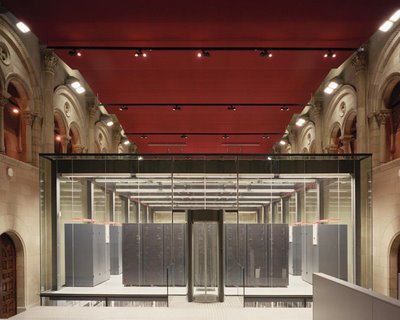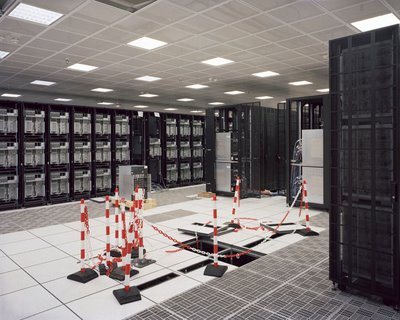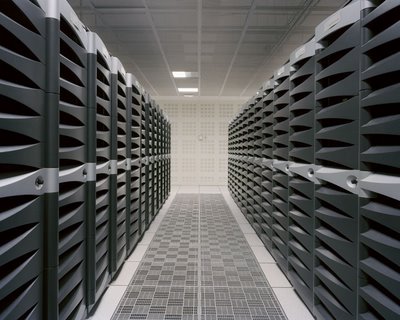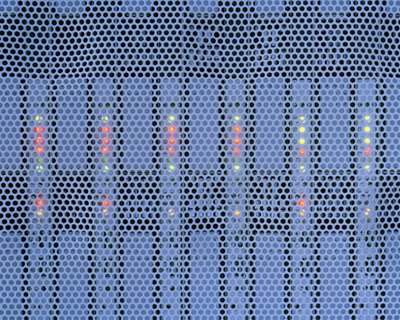 [Image: “Solomon’s Pools & ancient aqueducts…,” via Library of Congress.]
[Image: “Solomon’s Pools & ancient aqueducts…,” via Library of Congress.]
There’s a beautiful description over at New Scientist of a hypothetical new form of computing device, a “liquid crystal computer” in which calculations would move “like ripples through the liquid.”
According to researchers Žiga Kos and Jörn Dunkel, calculations would be performed by—and registered as—crystal orientations in the liquid, induced or controlled by electromagnetism: “Electric fields could… be used to manipulate the molecules to perform basic calculations, similar to how simple circuits called logic gates work in an ordinary computer. Calculations on the proposed computer would appear as ripples spreading through the liquid.”
Liquid-supercomputer facilities of the near-future might thus resemble not server farms but aquatic centers, sealed interiors lined with reflecting pools kept in different electromagnetic regimes. Although the air inside is utterly still, you watch as small ripples bounce and roll across the surface of each pool, depths triggered by equations. Thinking machines masked as hydrologic infrastructure. Cisterns and aqueducts. Computational hydrology.
There’s a line by William S. Burroughs that I probably quote too often, but I’m nevertheless reminded of again here. Burroughs once described “a vast mineral consciousness near absolute zero thinking in slow formations of crystal,” but perhaps this new vision is more akin to an oceanic consciousness thinking in slow tides and currents, liquid crystal waves of calculation breaking through the deep.
 [Image: “The ancient swimming pool at Bath,” via Library of Congress.]
[Image: “The ancient swimming pool at Bath,” via Library of Congress.]
Briefly, given the prevalence of cauldron imagery in Western myth, there is something almost folkloristic about the idea of liquid technologies such as this—pools that can model the future or offer visions of other worlds.
In fact, it tangentially brings to mind another wild proposal: constructing the “Ultimately Large Telescope” [PDF], a vast spinning cauldron on the moon, reflecting astral light from a facility constructed inside the darkness of a lunar crater.
This hypothetical telescope, Universe Today explains, “would rely on liquids rather than coated glass (making it much cheaper to transport to the Moon). One type of liquid would be arranged in a spinning vat while a second metallic liquid (like mercury, which is reflective) would be positioned on top. The vat would spin continuously to keep the surface of the liquid in the correct parabolic shape to work as a mirror.” A witches’ cauldron on the moon, peering into space.
(Vaguely related: Dark Matter Mineralogy and Future Computers of Induced Crystal Flaws.)
 [Image: Mexico’s “
[Image: Mexico’s “





